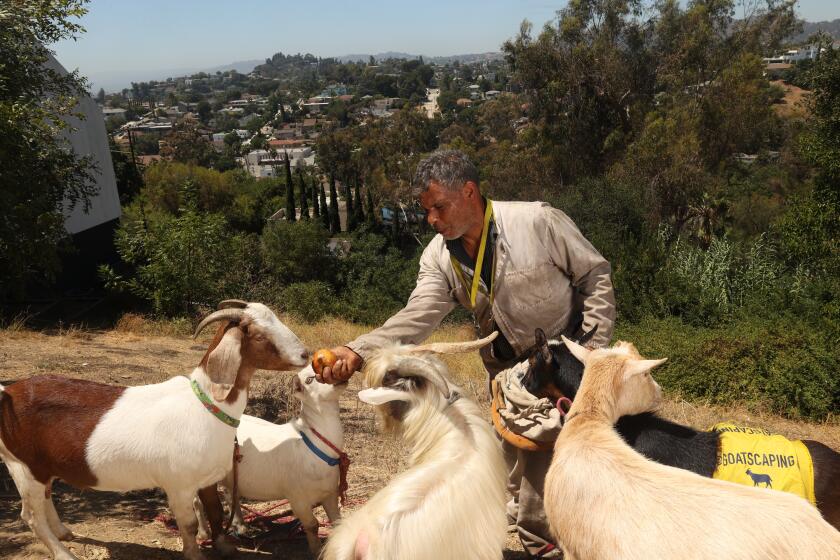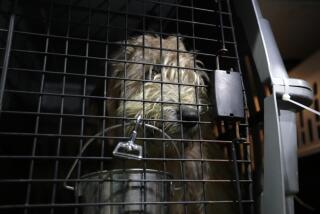A database of dangerous dogs. San Diego County should publish biters’ addresses, grand jury says

If a pet dog has a history of biting, does the public have a right to know?
The grand jury in San Diego County considered this question and answered in the affirmative.
In an investigation prompted by a complaint from a dog bite victim who found the official response inadequate, the watchdog group recommended that San Diego County publish the addresses of dog owners whose pets have been determined to be dangerous.
“Dog bites can cause physical and psychological harm and spread disease,” the grand jury said in a report to the Board of Supervisors last week. “About 2,500 dog bites are reported annually by San Diego County to the California Department of Public Health, although the true number is larger as not all cities make the required report.”
Charley, an aging African elephant, had outlived other elephants at a South Africa zoo. Moving him to his retirement at a private reserve took some delicate work.
The supervisors sent the report to the county’s Animal Services Department for review.
The county has a dog bite page on its website giving tips on how owners can keep their dogs from biting and how others can avoid being bitten.
It instructs those bitten on how to report the incident and provides a link to a dog bite report. But it provides no information on where dangerous dogs may be encountered.
Citing examples of dangerous-dog databases maintained by the state of Virginia; Volusia County in Florida; and Minneapolis, the grand jury recommended the county “develop a plan for collecting information about the location of a declared dangerous dog within the county and posting this information, so it is readily available to the public.”
The report found several deficiencies in how the county, and cities in the county, handle dog bite incidents. Not all cities pass on dog bite reports to the county, and some lack regulations allowing animal control officers to fine owners of dogs that are dangerous.
The grand jury recommended that all cities that don’t already have them develop regulations allowing officers to cite and fine owners for violating animal control ordinances, and that all dog bites be reported annually.
Dogs that have been declared to be dangerous must be muzzled in public, and the owner is required to post warning signs and maintain liability insurance of at least $100,000.
But in recommending a database of dogs that have been declared dangerous, the watchdog group acknowledged a hurdle.
Dael Wilcox said Animal Services kidnapped Beatrice and Benito, his goats. It took a lawsuit to get his hooved property back.
The procedure for designating dogs as dangerous requires the victim to testify in a court hearing. Victims interviewed by the grand jury described testifying as “a daunting experience” and one of the primary reasons hearings seldom occur.
“In the San Diego Humane Society reports for the last 3 fiscal years, 9 to 18 Dangerous Dog hearings a year took place, with 78% to 90% of those hearings resulting in the declaration that the dog was dangerous,” the report said.
Although not recommending any changes to make the process more accessible, the grand jury commended cities that levy fines of up to $500 for multiple violations of dog ordinances as a way of encouraging responsible ownership.
More to Read
Sign up for Essential California
The most important California stories and recommendations in your inbox every morning.
You may occasionally receive promotional content from the Los Angeles Times.













